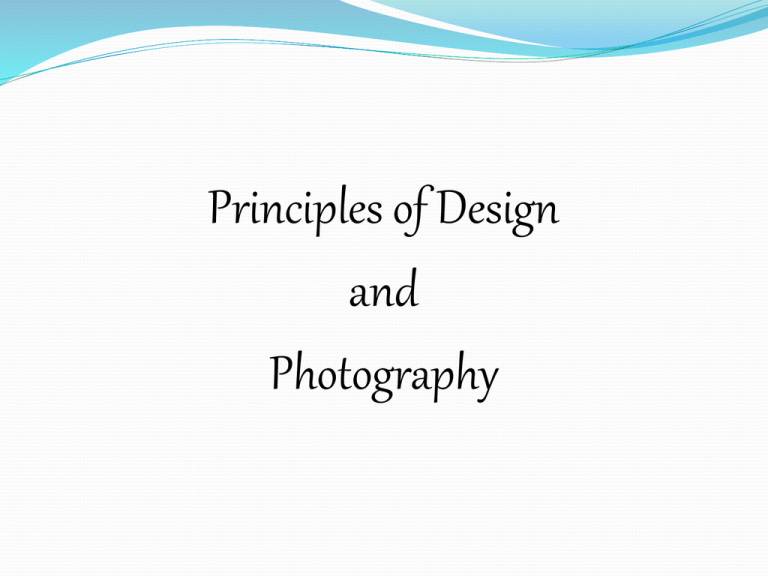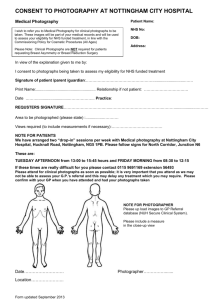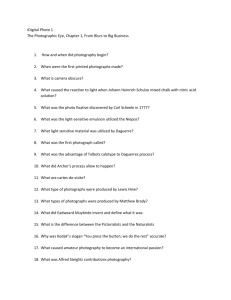Slide 1
advertisement

Principles of Design and Photography The principles of design help us organize and arrange the elements of art in our photographs. Unlike, the elements of art which can clearly be seen, the principles of design are more abstract. They are concepts which we will use to guide the arrangement of objects in our artwork. Pattern By repeating the elements of art (lines, shapes, colors, etc...), patterns are created. Balance Balance is the appearance of equal visual weight in a photograph. There are 3 main types of balance; Symmetrical, Asymmetrical and Radial. Symmetrical Balance- sometimes described as a mirror image composition. Asymmetrical Balance- objects appear to be balanced but nothing is centered in the picture frame. One way to achieve this is by using the Rule of Thirds. This is when a photographer divides the picture space into equal thirds, both horizontally and vertically, creating a grid. By placing the main objects of the photograph at the intersections of these lines, you will create a pleasing composition. Radial Balance- balance that occurs when objects are reflected around a central point of a photograph. Radial Balance can create a very energetic composition indicating forceful movement. Unity Unity is when the individual parts of your photograph come together to support each other. To be unified elements must relate to each other through their subject matter, appearance, size, texture or color. When unity is overdone, your photographs can appear boring, with nothing to grab and hold the viewer’s attention. Variety Variety has to do with using diverse art elements in your photography. As opposed to unity, where many elements are similar, variety focuses on using many different types of elements in your photographs. Be careful: adding too much variety to a composition can become chaotic and be distracting to viewers. Variety can be created by the objects, subjects, colors, textures and shapes in your photographs. Variety can also be created by the emotions and associations included in your photographs. Including a variety of figures, expressing many different emotions (anger, joy, sorrow and fear) in one single photographic composition would be just one way to incorporate variety, sparking interest and curiosity from viewers. Movement There are two types of movement in photography, real and implied. Shutter speed controls how much movement and time you capture in your photographs. The slower the shutter speed, compared to the speed of the subject, the more blurred image you will create, creating a sense of movement. The faster your shutter moves, compared to the speed of your subject, the more clear the image will be, capturing a single, frozen instant in time. Because of this, sports photographers often use the fastest shutter speed possible. Movement can also refer to how someone’s eyes move through your photographs. Viewer’s eye’s tend to follow lines through the composition of a photograph. Our eyes are also drawing to the largest and brightest areas in an image. By placing the largest and brightest objects in specific areas of your composition, you can control where the viewer’s eyes will move. Rhythm Rhythm is another type of visual movement in photography. Rhythm is created by an organized repetition of the elements of art such as colors, lines, and shapes. Emphasis One of the most important decisions you need to make as a photographer is to determine what your photograph will be about, and what the emphasis will be. This will help to clearly communicate to your viewers your main ideas, and help the viewers find a focal point in your images. One way to create emphasis on your subject is to get closer to the focal point, and make it bigger than all other elements in the photograph. Viewer’s tend to focus on lighter areas compared to darker areas of images. Another way to create emphasis in your photographs is to place more light on your subject compared to the background. Proportion Proportion is concerned with the relationship between the sizes of objects in your photographs.










